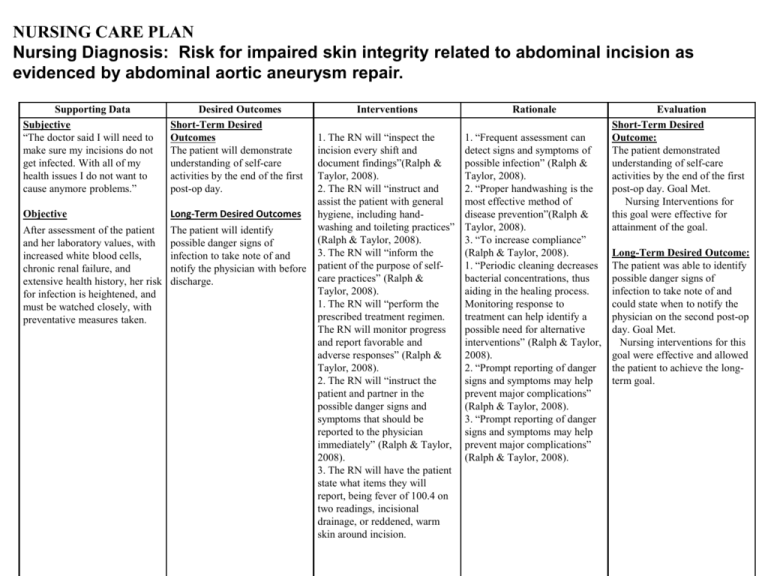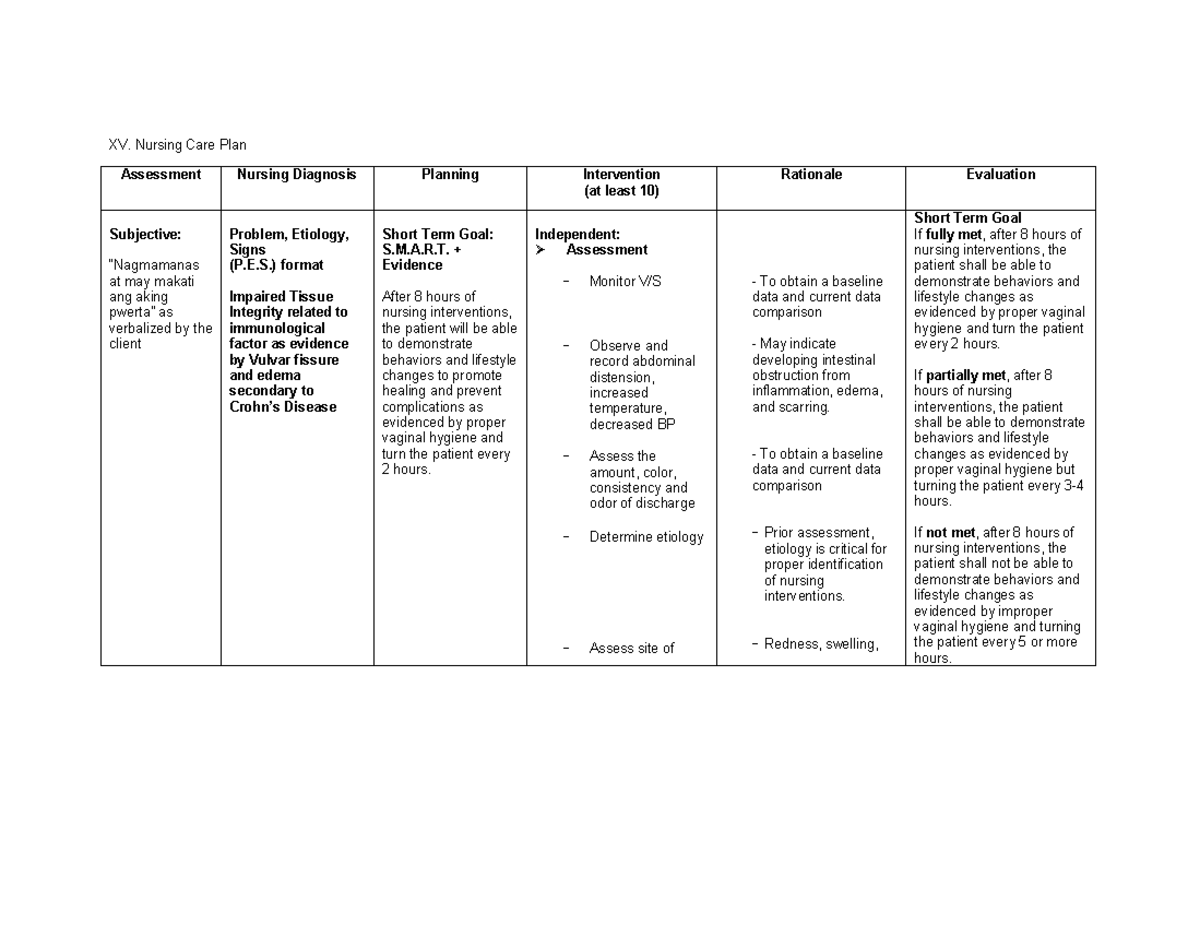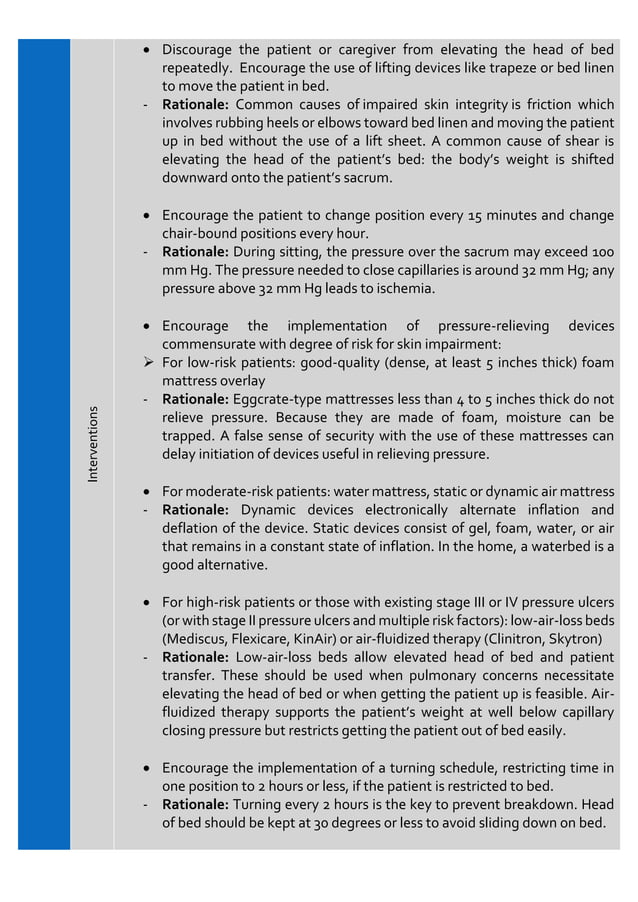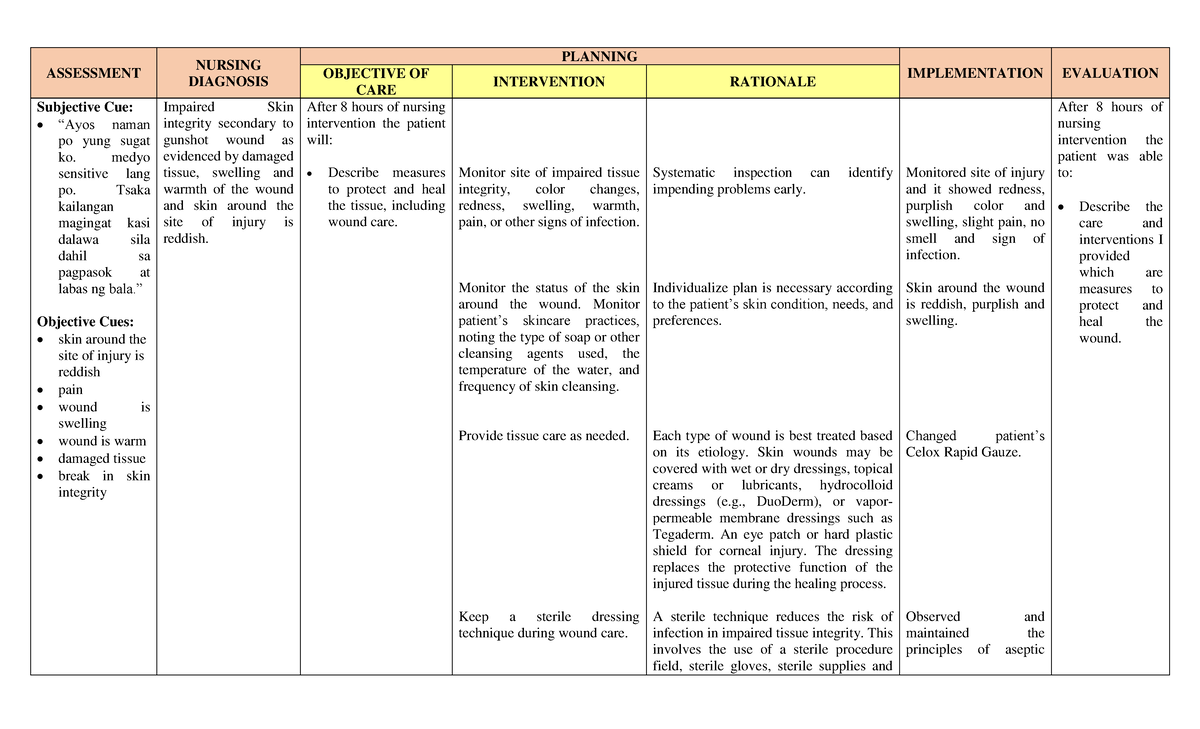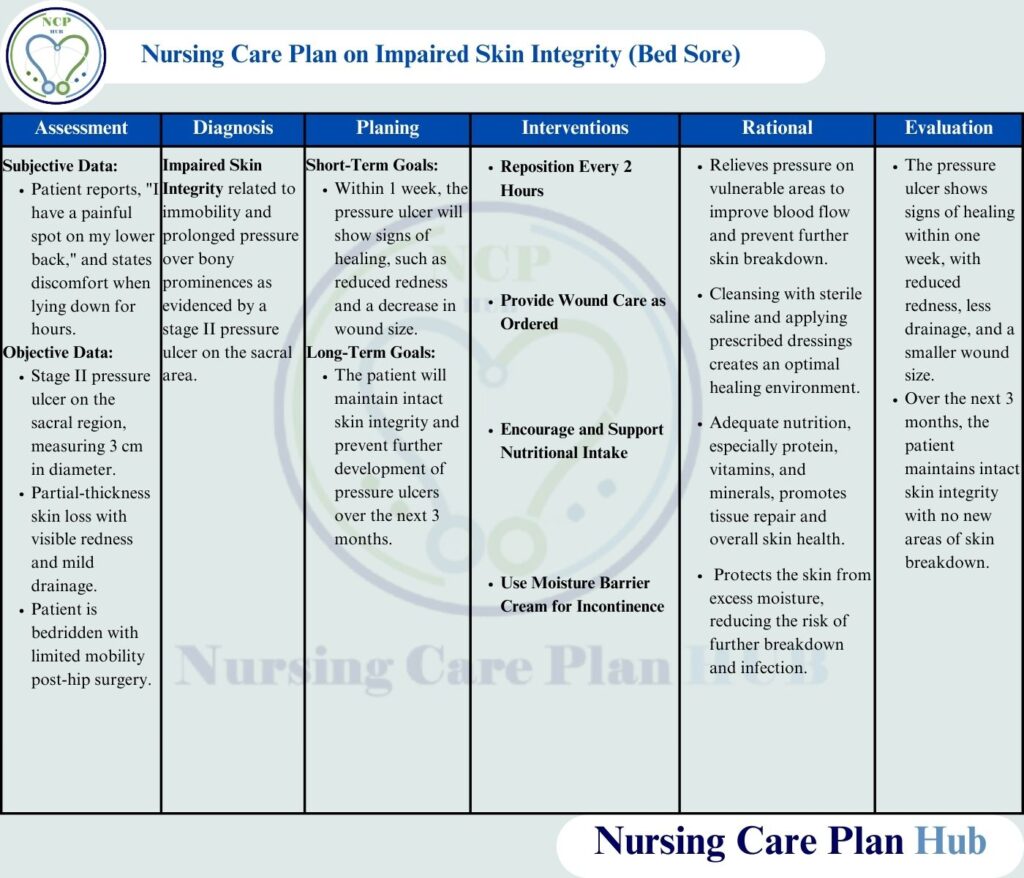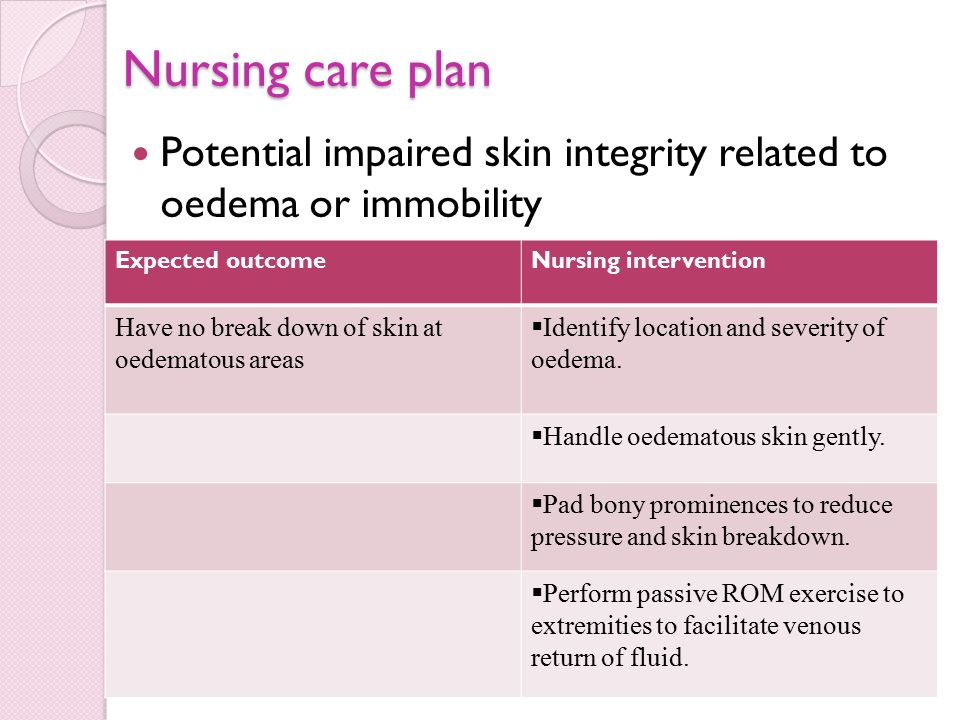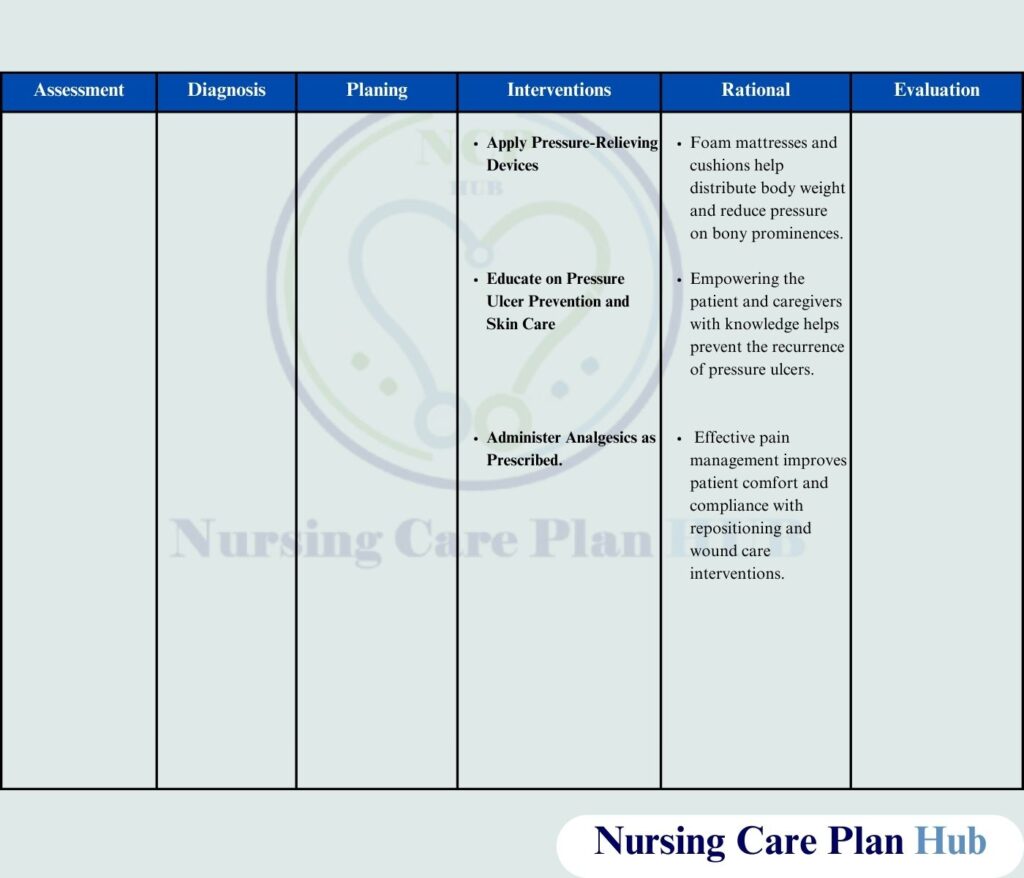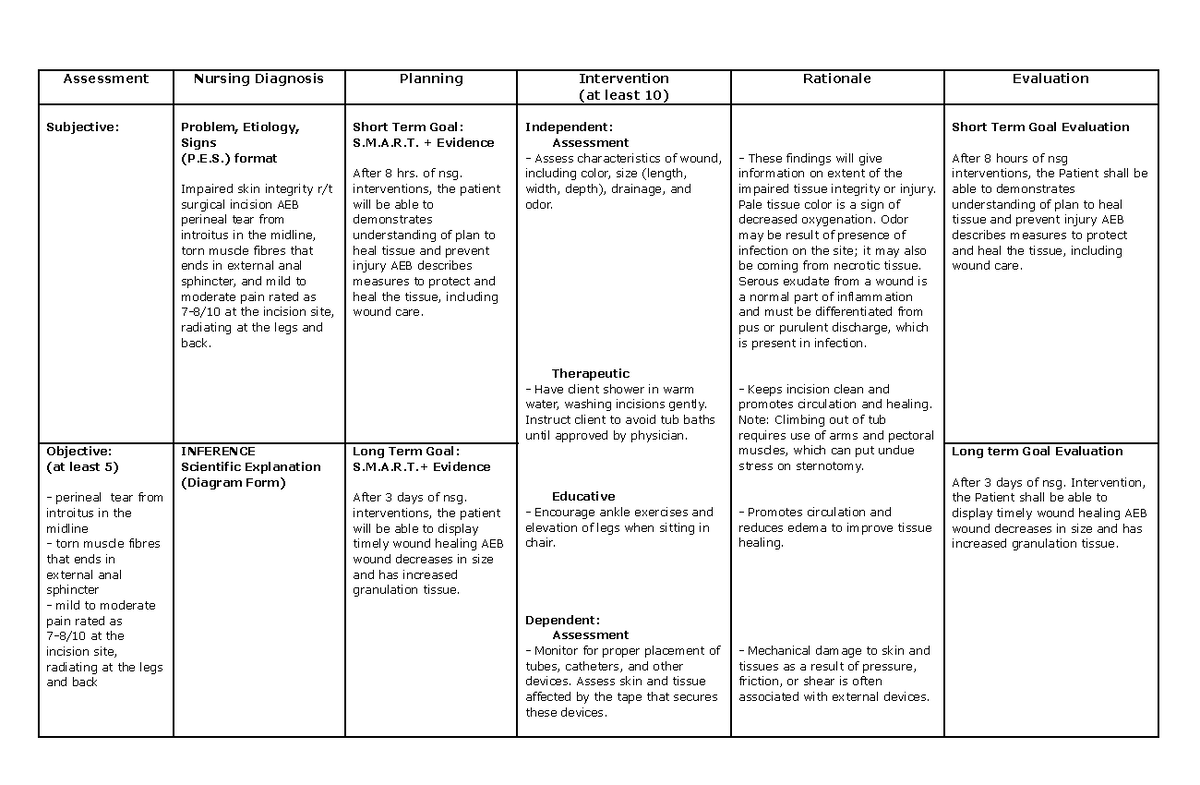Risk For Impaired Skin Integrity Nursing Care Plan
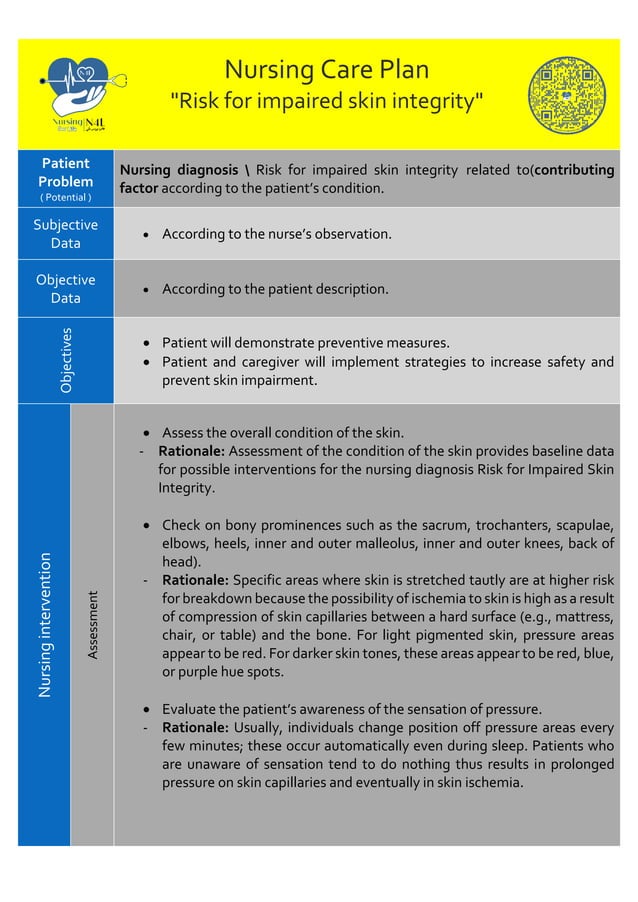
The relentless pressure of a hospital bed, the constant friction of movement, the insidious creep of moisture – these are silent aggressors against the body’s first line of defense: the skin. For vulnerable patients, especially those with limited mobility, compromised health, or advanced age, the risk of impaired skin integrity looms large, threatening to unravel their recovery and significantly diminish their quality of life.
This article delves into the multifaceted challenge of managing and mitigating the risk for impaired skin integrity, specifically focusing on the critical role of the Risk for Impaired Skin Integrity Nursing Care Plan. It examines the core elements of such plans, explores evidence-based preventative strategies, highlights the importance of interdisciplinary collaboration, and underscores the ongoing need for vigilant monitoring and individualized interventions. This in-depth exploration aims to provide a comprehensive understanding of the crucial steps healthcare professionals must take to protect and preserve the skin integrity of their patients.
Understanding the Scope of the Problem
Impaired skin integrity encompasses a range of conditions, from superficial abrasions and pressure ulcers to more complex wounds. The development of these conditions can lead to pain, infection, prolonged hospital stays, and increased healthcare costs.
According to the National Pressure Injury Advisory Panel (NPIAP), pressure injuries, a significant manifestation of impaired skin integrity, remain a persistent challenge in healthcare settings. These injuries not only impact patient well-being but also contribute to significant financial burdens on hospitals and healthcare systems.
The Risk for Impaired Skin Integrity Nursing Care Plan: A Framework for Prevention
A well-structured nursing care plan for Risk for Impaired Skin Integrity is a proactive and systematic approach to identify, address, and minimize the potential for skin breakdown. The plan serves as a roadmap for nurses and other healthcare professionals, guiding their interventions and ensuring consistent, individualized care.
The core components typically include: a comprehensive skin assessment, identification of risk factors, establishment of measurable goals, implementation of targeted interventions, and continuous evaluation of outcomes.
Key Elements of a Comprehensive Skin Assessment
The initial assessment is paramount. It should involve a thorough visual inspection of the skin, paying particular attention to bony prominences and areas prone to moisture or friction.
The Braden Scale is a widely used tool for assessing a patient's risk for developing pressure injuries, considering factors such as sensory perception, moisture, activity, mobility, nutrition, and friction/shear. Accurate and consistent use of such scales helps to stratify risk and guide the intensity of preventative measures.
Assessing nutritional status is also crucial, as adequate protein, vitamins, and minerals are essential for maintaining skin integrity and promoting wound healing. The healthcare team should be proactive in identifying and addressing any nutritional deficiencies.
Targeted Interventions: Preventing Skin Breakdown
Interventions should be tailored to the individual patient's needs and risk factors. Regular repositioning, at least every two hours, is a fundamental strategy to relieve pressure on vulnerable areas.
Pressure-redistributing support surfaces, such as specialty mattresses and cushions, can significantly reduce the risk of pressure injuries. These surfaces help to distribute weight evenly and minimize pressure points.
Meticulous skin hygiene is essential. The skin should be kept clean and dry, using gentle cleansers and avoiding harsh soaps that can strip away natural oils. Moisture barriers can be applied to protect skin from excessive moisture, such as from incontinence or perspiration.
Adequate hydration is also critical. Encourage patients to drink plenty of fluids to maintain skin elasticity and prevent dryness.
The Importance of Interdisciplinary Collaboration
Effective management of Risk for Impaired Skin Integrity requires a collaborative approach involving nurses, physicians, dietitians, physical therapists, and other healthcare professionals. Each member of the team brings unique expertise to the table, contributing to a comprehensive and individualized plan of care.
For example, a dietitian can assess and address nutritional deficiencies, while a physical therapist can help improve mobility and reduce the risk of pressure injuries. Open communication and shared decision-making are essential for optimizing patient outcomes.
Monitoring and Evaluation: Ensuring Ongoing Effectiveness
The nursing care plan should be continuously monitored and evaluated to ensure its effectiveness. Regular skin assessments should be performed to identify any changes in skin integrity and to adjust interventions as needed.
Documentation is crucial. Accurate and detailed documentation of assessments, interventions, and outcomes provides a clear record of care and facilitates communication among team members. Any signs of skin breakdown should be promptly reported to the healthcare provider.
Looking Ahead: Future Directions in Skin Integrity Management
Technological advancements are offering new possibilities for preventing and managing impaired skin integrity. Sensor technology embedded in mattresses and clothing can provide real-time monitoring of pressure and moisture levels, allowing for more targeted interventions.
Advanced wound care products, such as growth factors and bioengineered skin substitutes, are showing promise in accelerating wound healing. Further research is needed to optimize the use of these technologies and to develop new strategies for preventing skin breakdown.
Ultimately, the goal remains to proactively protect and preserve the skin integrity of vulnerable patients, improving their comfort, reducing complications, and enhancing their overall quality of life. A robust and consistently implemented Risk for Impaired Skin Integrity Nursing Care Plan is a cornerstone of achieving this crucial objective.
